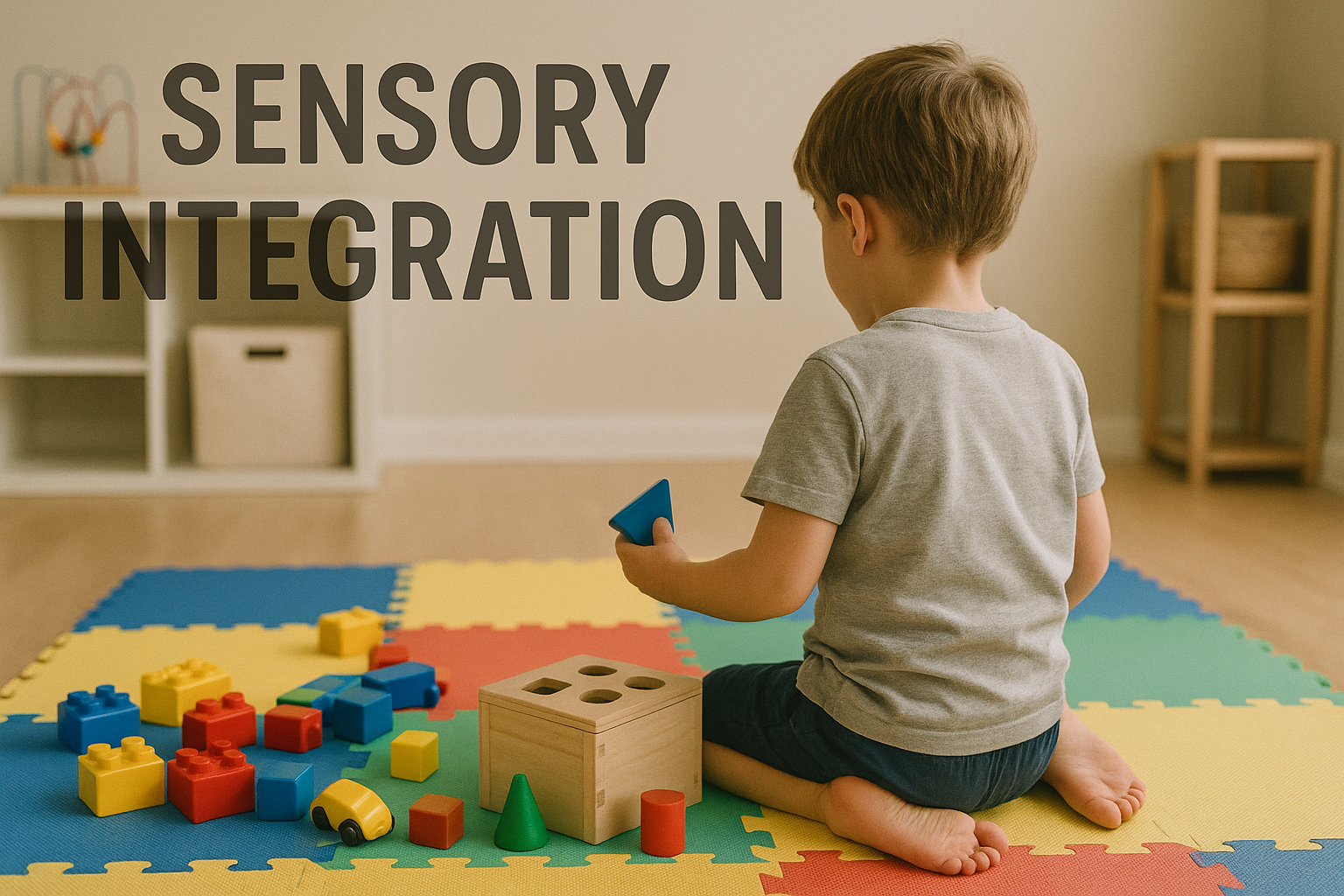The Role of Sensory Integration in Pediatric Occupational Therapy
Sensory integration is a foundational concept in pediatric occupational therapy that supports children’s ability to engage, learn, and function in everyday life. When the brain struggles to interpret sensory information, children can experience challenges in behavior, attention, motor skills, and regulation. In this post, we’ll explore what sensory integration is, how it works, why it matters, and how skilled occupational therapists use it to support children’s development.
1. Understanding Sensory Integration
- Sensory integration refers to how the brain receives, processes, and organizes sensory input from the body and environment (touch, sound, movement, vision, proprioception, etc.).
- Children with sensory integration difficulties may be hypersensitive (overreacting to sensory input) or hyposensitive (under‑responding), making everyday stimuli overwhelming or unnoticed.
- These challenges can impact behaviors, attention, emotional regulation, coordination, and participation in daily activities.
2. Common Signs and Challenges
Children who struggle with sensory integration may show one or more of the following:
- Overreacting to sounds, textures, lights, or movement
- Avoiding messy play, crowds, or certain clothing fabrics
- Seeking intense sensory input (spinning, crashing, jumping)
- Difficulty with balance, coordination, or motor planning
- Trouble concentrating, frequent distractibility, or emotional outbursts
- Delays in self-care tasks (dressing, feeding) or school performance
Identifying these signs early helps guide the assessment and intervention process.
3. The OT Assessment Process
- Pediatric OTs begin with a comprehensive sensory assessment, observing how a child responds to different sensory inputs in real settings (clinic, home, school).
- They may use standardized tools, parent/caregiver questionnaires, direct observation, and functional tasks to measure sensory behavior and its impact on performance.
- The goal is to understand which sensory systems are affected (e.g. vestibular, proprioceptive, tactile) and how those differences interfere with daily tasks.
4. Intervention: Sensory Integration Therapy & Strategies
Occupational therapists use sensory integration-based interventions to help children better process and respond to sensory information. Key elements include:
- Play-based, meaningful activities — swings, climbing, jumping, tactile exploration, obstacle courses
- “Just-right challenge” — tasks that are neither too easy nor too overwhelming
- Sensory diet — a structured set of sensory activities tailored to the child’s needs, woven into daily routines
- Joint strategies and environmental adaptations — modifying surroundings to support sensory regulation (e.g. calm spaces, noise control, weighted tools)
- Close caregiver involvement — teaching parents and educators how to reinforce strategies in everyday life
The therapist gradually introduces more complex sensory tasks as the child’s tolerance and integration improve.
5. Benefits of Sensory Integration Intervention
When sensory integration therapy is well-matched and individualized, children may experience:
- Greater tolerance to sensory-rich environments
- Improved attention, focus, and self-regulation
- Enhanced motor skills, coordination, and balance
- Reduced anxiety, behavioral outbursts, or emotional overwhelm
- Better participation in daily tasks (play, school, self-care)
While research is ongoing, many clinical practices and families report significant functional improvements.
6. Best Practices & Ethical Considerations
- Sensory integration interventions should be led by qualified, trained therapists who deeply understand the theory and evidence base.
- Interventions must be individualized and evidence-informed, continuously adapted to the child’s progress and tolerance.
- Therapists should monitor and measure outcomes, using data to guide changes.
- Collaboration with families, teachers, and the child’s broader support network ensures consistency and generalization across environments.
- It’s important to be transparent about the evidence, limitations, and realistic expectations of outcomes.
Conclusion
Sensory integration is a vital tool in pediatric occupational therapy, helping children learn how to make sense of their world and engage more fully in daily life. By assessing sensory profiles, designing individualized interventions, and collaborating with caregivers, therapists can support children’s growth, confidence, and functional success.

